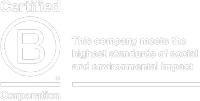The title is the central thesis of today’s blog. Simple. So why aren’t we all nailing it? Why do so many of us fail to act, or worse act in conflict rather than unity? Why is turning our intentions into our actions so difficult? I believe it is due to the fact that it is a relentless pursuit. Just when you have developed a rhythm and habit with one intention, boom another lands!
‘Intentions’ as a word that is used alot. There are literally thousands of picture quotes online with a variation of the theme. Defined by Dictionary.com as “purpose or attitude toward the effect of one’s actions or conduct”. A key word in the definition is actions. ‘Actions’, as defined by Dictionary.com, “habitual or usual acts; conduct”. Therein lies the rub. Therein lies the disconnect. Therein lies the problem. (I am starting to sound like I am from Britain rather than New Jersey!).
Transitioning a purpose or mindset into a habit is a very difficult task. It takes a lot more than intentions to make that happen. It takes all those other things you read in picture quotes. Tenacity, courage, resilience, focus, accountability, and so our list could go on. This is why picture quotes sometimes wind me up. This stuff is hard and the more we declare it’s difficulty the better we will all be for it. Well I think.
Whenever I say leadership is relentless I can see the weight lift off peoples shoulders. A declaration – a public announcement – leadership is tricky business. And any leader worth their weight has to live life by turning their intentions into actions otherwise they are just hot air. As if this isn’t hard enough, our world has become a lot more complicated. General purpose technologies that have changed the way we live have created an ironically flat world. We are now all connected and need to take responsibility for one another from supply chain to consumption.
I feel so strongly about how important intentions and actions are, that I wrote about intentions twenty-six times and actions thirty-eight in On Purpose. Not to be repetitive but to illustrate the so many variables impact our ability to live a life of and on purpose. Here is a bit from On Purpose – be patient in the read as it has been selected on purpose. We have to include everyone in our intentions and then make sure we act for all of them – not just one. And remember, profit is an outcome…
Servicing constituents the world over
(Firstly, an aside. I prefer to use the word ‘constituents’ over ‘stakeholders’, as it is more collaborative and less hierarchical in tone. However, if you prefer the word ‘stakeholders’, just mentally replace it every time I write constituents.)
Three to four key constituents often collide within most organisations: customers, employees, community and, for publically listed companies or those about to list, shareholders and/or venture capitalists. When your purpose is not clear and it doesn’t relate to your constituents, the people who are trying to get stuff done may get confused.
The classic ‘but what about this or that?’ (my favourite is ‘shareholder value’) gets dropped into the decision process like a bomb, particularly when a difficult decision has to be made. Confusion and cynicism creep into the room. The worst part about that behaviour is that it adds no value. It just distracts.
Looking after your constituents is not easy, but somebody has to be centre stage. There must always be a protagonist. Since any organisation worth its purpose-driven salt needs to be outward-facing, your customers are most often going to have to be your protagonists.
Putting shareholders to one side, what about our people—our employees? Surely they cannot simply be a means to our customers’ ends? To our own ends?
The answer is well researched, but in my own simple terms: when everyone is working for employees first, you become an inward-facing organisation. Self-interest may sneak in, and customers lose. When purpose and meaning are operating in your business (the what and how you do things), where trust, respect and dignity abound, people become the end in themselves, and for themselves. Operations are directly in line to benefit from this harmonious, focused and autonomous culture working for the same far-reaching purpose.
We have spoken a bit about building communities, such as working in community with our customers. But what about our community’s all-important surrounds, inclusive of our beloved mother earth? Sustainability is not some hippy rant or centralised corporate program. It is a reality: it’s about stopping to make sure our purpose enhances our community rather than negatively impacts, diminishes or damages.
When our purpose considers the entire community and its surrounds, we have the ability to create intentions and turn them into tangible actions — in addition to corporate social responsibility and charitable foundations.
In this way we mesh with our community and mutually benefit one another, rather than cause friction and disconnect.
So from here I wish you the best. The best intentions and the best outcomes – all resulting from your actions. And if anyone tries to give you a hard time ignore them and know that this stuff is hard, it is relentless and as long as you can look over your shoulder and know you gave it your best shot you are I2A. A rare breed indeed.








